Occupational Safety Training for Operating Heat Press Machines
99,000 ₫
Note: The above price is calculated per person and may vary depending on the number of participants in the course and market fluctuations. For more accurate pricing support, please refer to the price list or contact our consultants directly.
Occupational safety is an important issue when operating heat press machines and needs to be addressed promptly to ensure the health and safety of workers and to enhance the reputation of businesses here. The Occupational Safety Training is one of the effective solutions to raise awareness on how to prevent occupational accidents for workers operating heat press machines.
Table of Contents
Toggle1. Overview of the Heat Press Machine
a. What is a heat press machine?
A heat press machine is a device used to transfer heat and pressure onto materials to perform processes such as printing, bonding, or shaping. It is a common tool in the fabric processing, advertising, and personalized product manufacturing industries. Heat press machines are typically used to apply images, text, or designs onto various surfaces such as T-shirts, hats, bags, and other products.
Main Components
- Platen Surface: The part that directly contacts the material to be pressed. It can be the upper platen and the lower platen, usually made of heat-resistant materials like aluminum or steel.
- Heating System: Equipped with heating elements, usually electric heating rods or heating belts, to generate the required temperature for the pressing process.
- Temperature and Time Controller: Allows users to set and control the pressing temperature and time precisely. This is crucial to ensure the pressing results meet requirements without damaging the material.
- Pressure System: Provides uniform pressure across the entire surface of the material to ensure the design is transferred evenly.

b. Operating principle of the heat press machine
The operating principle of the heat press machine is based on the combination of heat and pressure to transfer images or designs from a heat transfer sheet onto materials. This process can be divided into the following main steps:
Material Preparation
- Prepare the material to be pressed: Place the material (such as a T-shirt, bag, or pillow) on the lower platen of the heat press machine.
- Place the heat transfer sheet: The heat transfer sheet can be thermal paper or transfer film with a pre-printed design. Place this sheet onto the material surface so that the design is in the correct position.
Set Temperature and Time
- Set temperature: Adjust the machine temperature based on the type of material and heat transfer sheet used. The temperature usually ranges from 150°C to 200°C.
- Set time: Set the required pressing time. This depends on the material and heat transfer sheet. Typically, pressing time is from 10 to 30 seconds.
Apply Pressure and Heat
- Close the press: When the machine is closed, the upper and lower platens apply heat and pressure onto the transfer sheet and material. This pressure is usually generated by springs or pneumatic systems.
- Heat transfer: Heat from the heating elements (such as electric heating rods or heating belts) is transmitted to the platen surface. The combination of heat and pressure causes the ink or transfer material to adhere firmly to the substrate.
Complete the Process
- Open the press: After the pressing time is complete, open the machine to remove the material. The design transfer from the heat transfer sheet to the material is finished.
- Check: Inspect the result to ensure the design was transferred evenly and accurately.

c. Industries that use heat press machines
Fashion Industry
- T-shirt printing: Heat press machines are commonly used to transfer designs, logos, or images onto T-shirts, polo shirts, and other fashion products.
- Personalized fashion manufacturing: Creating personalized fashion products such as jackets, bags, and hats.
Advertising and Promotion Industry
- Production of promotional gifts: Printing logos, slogans, or designs onto promotional products such as mugs, pillows, and T-shirts.
- Creating advertising items: Manufacturing branded advertising products including banners, signs, and office supplies.
Manufacturing and Material Processing Industry
- Production of decals and labels: Printing various types of decals, labels, and tags for products.
- Manufacturing material products: Applying coatings or designs onto products like bags, phone cases, and mats.
Interior and Decoration Industry
- Production of decorative fabrics: Creating interior decoration products such as pillows, curtains, and tablecloths with custom designs.
- Creating personalized products: Printing personalized designs on interior products to create highlights in living spaces.
Education Sector
- Uniform production: Manufacturing school uniforms for students, teachers, and staff with school logos or designs.
- Printing educational materials: Printing study materials or gifts for students and teachers.
Healthcare Industry
- Production of medical apparel: Printing logos or information on medical garments such as doctor’s coats and masks.
- Creating personalized products: Producing personalized items for patients or healthcare facilities.
Toy and Children’s Products Industry
- Creating personalized toys: Printing designs or names on toys or children’s products.
- Production of study supplies: Printing designs or images on study products such as books, backpacks, and study tools.
Sports and Entertainment Industry
- Sports uniform production: Printing jersey numbers, names, and team logos on sports uniforms.
- Creating sports promotional products: Producing advertising products for sports events or clubs.
2. Overview of Occupational Safety Training for Operating Heat Press Machines
a. What is occupational safety training?
- Occupational safety training for operating heat press machines consists of sessions designed to raise awareness about accident prevention for workers. Accordingly, those who directly operate heat press machines belong to group 3.
- The safety training course helps workers identify and avoid hazards, reducing the risks of occupational accidents while working.
REGISTER FOR OCCUPATIONAL SAFETY TRAINING SERVICE
b. Training duration
Initial occupational safety training duration
- Total training time is at least 24 hours, including exam time.
- 8 hours of theory on policies, laws related to occupational safety and hygiene
- 8 hours of theory on basic knowledge of occupational safety and hygiene
- 4 hours of theory on specialized training content
- 2 hours of practice on specialized training content
- 2 hours of theoretical exam at the end of the course
The safety training center will arrange the time into multiple sessions depending on workers’ schedules. Typically, there are 6 training sessions, with the course lasting 3 days, provided the manufacturing company can arrange continuous training time.
Periodic safety training duration
- Before the occupational safety card expires, workers who want to renew it must undergo a periodic occupational safety training course, with a periodic training duration of at least 50% of the initial training duration.
Explanation: The total duration of periodic occupational safety training is at least 12 hours, including exam time. After completing the periodic training and passing the exam, workers will be reissued or have their occupational safety card extended.
c. Training course content
| No. | TRAINING CONTENT | TRAINING DURATION (HOURS) | |||
| Total | Including | ||||
| Theory | Practice | Exam | |||
| I | Policies and laws on occupational safety and hygiene | 8 | 8 | 0 | 0 |
| 1 | Overview of legal documents system on occupational safety and hygiene. | 6 | 6 | ||
| 2 | System of standards and technical regulations on occupational safety and hygiene. | 1 | 1 | ||
| 3 | Specific regulations by state management agencies on occupational safety and hygiene when constructing new, expanding, or renovating facilities, manufacturing, using, storing, and inspecting machines, equipment, materials, and substances requiring strict safety and hygiene. | 1 | 1 | ||
| II | Basic knowledge of occupational safety and hygiene | 8 | 8 | 0 | 0 |
| 1 | Basic knowledge of hazards and harmful factors in the workplace. | 4 | 4 | ||
| 2 | Methods to improve working conditions. | 1 | 1 | ||
| 3 | Safety culture in production and business. | 1 | 1 | ||
| 4 | Rights and obligations of employers and employees; policies and regimes on occupational safety and hygiene for employees; roles and responsibilities of safety network and safety officers. | 1 | 1 | ||
| 5 | Safety and hygiene rules, safety signs, and use of safety equipment and personal protective equipment; skills in first aid, accident prevention, and occupational disease prevention. | 1 | 1 | ||
| III | Specialized training content | 6 | 4 | 2 | 0 |
| Comprehensive knowledge of machines, equipment, hazardous and harmful substances; risk analysis, evaluation, and management in occupational safety and hygiene; safe working procedures with machines, equipment, and substances requiring strict safety and hygiene. | 6 | 4 | 2 | ||
| IV | Final occupational safety training exam | 2 | 2 | 0 | 0 |
| Total | 24 | 22 | 2 | ||
See more training contents of the 6 groups
d. Occupational safety card
After completing the occupational safety training course and passing the exam, workers will be issued an occupational safety card (commonly called a safety certificate for group 3).
The group 3 safety card clearly shows information such as full name, date of birth, job, and specific working environment. It also includes training time, an official red stamp, and a signature confirming course completion.
According to the card issuance regulations specified in Clause 2 of Article 24 of Decree 44/2016/ND-CP, there are two cases:
- If the employer and employee have a labor contract, the employer must sign, stamp, and authenticate the safety card for group 3 workers after they complete the training from the occupational safety training unit and pass the exam.
- If the worker is freelance or seasonal, without a labor contract, the training unit must sign, stamp, and authenticate the safety card after the worker completes the training and passes the exam.

3. Hazards for workers when operating the heat press machine
Risk of Burns
- Cause: The heat press machine uses high temperatures to transfer designs, so its surfaces can become very hot.
Risk of Injury from Pressure
- Cause: High pressure from the machine can cause injuries if not handled properly.
Risk of Electric Shock
- Cause: The heat press machine usually operates with electricity, and electrical wiring or system faults may cause electric shock risks.
Risk of Hand or Body Entrapment
- Cause: When the heat press closes, there is a risk of trapping hands or other body parts if not careful.
Risk from Chemicals Used
- Cause: Some types of inks or heat transfer materials may contain harmful chemicals.
Risk from Improper Operation
- Cause: Using the heat press machine incorrectly can lead to accidents or incidents.
4. Measures to control occupational accidents when operating the heat press machine
Training and Instruction
- Staff Training: Provide full training to all employees on how to use the heat press machine, including operating procedures, safety factors, and troubleshooting.
- Safety Guidance: Ensure workers clearly understand the necessary safety measures and emergency procedures in case of accidents.
Maintenance and Regular Inspection
- Machine Inspection: Perform periodic inspections and maintenance of the heat press machine to ensure proper operation and prevent mechanical or electrical failures.
- Timely Repairs: Repair or replace faulty parts immediately to avoid incidents during use.
Use of Protective Equipment
- Heat-resistant Gloves: Provide heat-resistant gloves to workers to protect hands when touching hot surfaces of the machine.
- Safety Glasses: Use safety glasses if necessary to protect eyes from strong light or dust from heat transfer materials.
- Masks and Gloves: Provide masks and protective gloves when working with chemicals or potentially harmful materials.
Safe Machine Design and Installation
- Protective Mechanisms: Ensure the heat press machine is equipped with protective mechanisms such as heat shields and automatic safety systems to prevent hand entrapment or contact with hot surfaces.
- Emergency Stop System: Install emergency power cut-off systems near the machine for quick shutdown in emergencies.
Risk Management and Assessment
- Risk Assessment: Conduct regular risk assessments to identify potential hazards and implement appropriate preventive measures.
- Safety Management: Establish and maintain an occupational safety management system to monitor, evaluate, and improve safety measures related to operating the heat press machine.
Implement Safety Procedures
- Procedure Guidance: Establish and follow specific safety procedures during machine operation, including preparation, operation, and cleanup after use.
- Ensure Cleanliness: Keep the work area clean and organized to reduce the risk of accidents caused by slips or collisions with unnecessary objects.
Incident Handling and First Aid
- Incident Response Plan: Have a clear plan for incident handling and first aid in case of accidents, including first aid steps and notifying emergency medical services.
- First Aid Kit: Ensure a fully equipped and easily accessible first aid kit is available in the work area.
5. Benefits of occupational safety training
An Toan Nam Viet provides your business with the following great benefits after completing occupational safety training courses in accordance with Decree 44/2016/ND-CP on occupational safety and hygiene work, for companies, factories, and enterprises.
- Workers can recognize potential occupational accident hazards and take preventive measures to avoid accidents.
- Your business establishes risk prevention measures in production, operation, and maintenance processes.
- Reduce costs related to occupational safety risks.
- Uninterrupted production increases labor productivity and product quality.
- Compliance with labor safety laws to avoid legal risks.
- Create credibility and professionalism in all aspects, thereby enhancing your company’s brand.
Nam Viet’s training courses are the solution to prevent and combat external factors affecting individuals so they can avoid dangers leading to injury or even death.
REGISTER FOR OCCUPATIONAL SAFETY TRAINING SERVICE
6. Customer feedback after completing training courses
An Toan Nam Viet has many years of experience accompanying many enterprises across Vietnam in general and southern provinces in particular. This responsibility is very precious to Nam Viet, so the occupational safety training is increasingly professional. Our growth motivation comes from positive feedback and suggestions from our partners. Below are testimonials from valued clients we have served.
Hoa Dat Construction and Trading Joint Stock Company
“Nam Viet’s service has helped us simplify occupational safety and complete safety documentation for our work process. The consulting team was enthusiastic and timely in answering our questions. Five stars for Nam Viet.”
See more customer interviews after using An Toan Nam Viet’s services
7. Occupational Safety Training Capacity of An Toan Nam Viet
An Toan Nam Viet is a reputable and quality occupational safety training center in Vietnam today. Training sessions are held continuously at manufacturing workshops, factories, or construction sites nationwide (in all 63 provinces of Vietnam).
REGISTER FOR OCCUPATIONAL SAFETY TRAINING SERVICE
Occupational safety training license
- An Toan Nam Viet has been inspected and certified by the Department of Safety under the Ministry of Labor – Invalids and Social Affairs to meet conditions for conducting occupational safety and hygiene training. This further strengthens our capacity in occupational safety training.

Training materials and lectures
- Before being used in occupational safety training courses, training materials are reviewed and approved to ensure accuracy and effectiveness.
- Teaching methods of instructors are standardized according to An Toan Nam Viet’s guidelines, based on research and experience in occupational safety and hygiene training to maximize learners’ knowledge absorption.
Facilities
- Controlling environmental factors in classrooms enhances teaching performance and learners’ knowledge absorption.
- Our training facilities always provide spacious classrooms meeting standards for area, lighting, training equipment, etc.
8. Nationwide reputable and quality safety training center
At An Toan Nam Viet, we prioritize professional dedication in occupational safety training. For us, imparting knowledge so workers can protect themselves is contributing to the country’s development.
To ensure effective training, we carefully prepare every detail, from tools and teaching equipment to curricula, documents, sound, and lighting.
Our occupational safety trainers are experts with many years of experience. They also have research projects identifying hazards across industries and how to prevent them.
Our instructors’ lectures are practical and delivered vividly and clearly to workers, helping them comfortably learn and absorb knowledge. The training content strictly follows Decree 44/2016/ND-CP.
As a result, workers learn many hazard prevention measures and how to protect themselves appropriately in their work.
Our training center proudly provides reputable, professional occupational safety training services with the following advantages:
- Competitive training costs while ensuring quality.
- Flexible training schedules matching company production.
- Quick and lawful certification paperwork procedures.
- Experienced instructors with many years in the field.
- Classrooms controlled to optimize teaching and learning efficiency.
- Training materials tailored to occupational safety at enterprises.
- An Toan Nam Viet works diligently and professionally to support customers accurately and promptly.

9. Additional occupational safety training materials
No comments yet

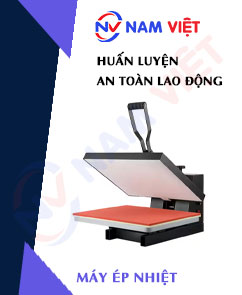
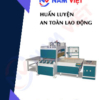
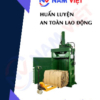






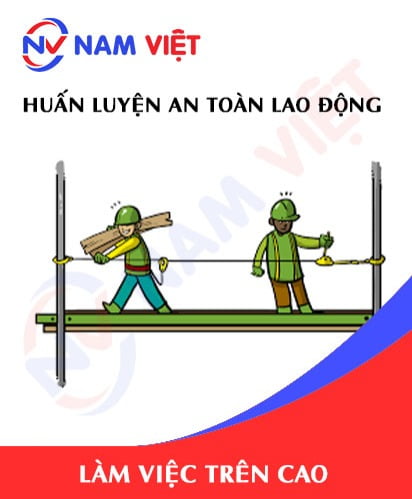
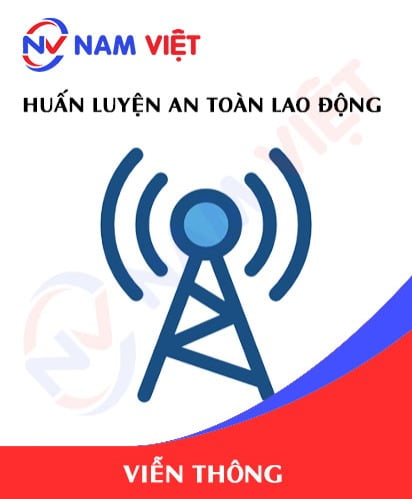



Review Occupational Safety Training for Operating Heat Press Machines
There are no reviews yet.